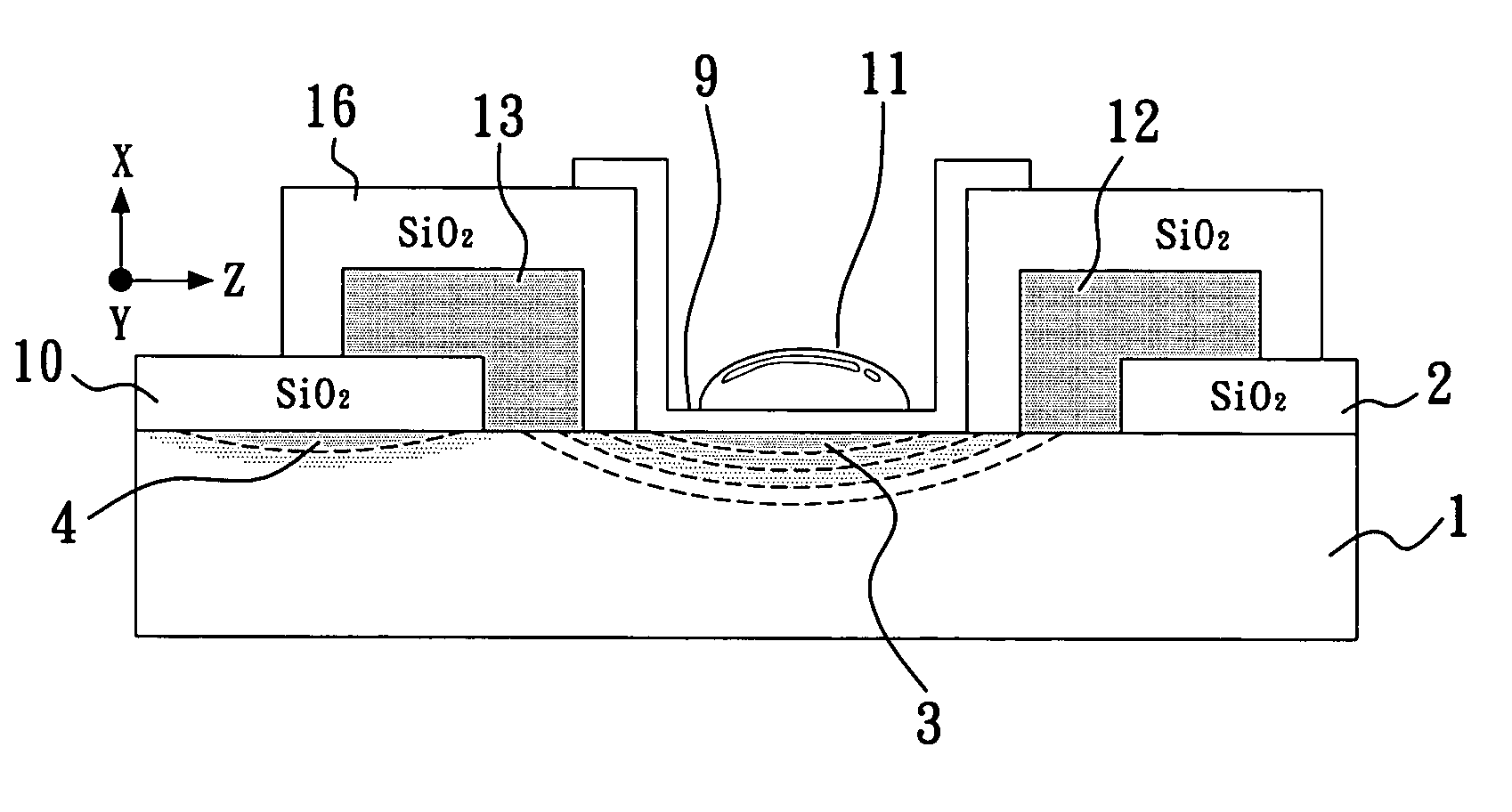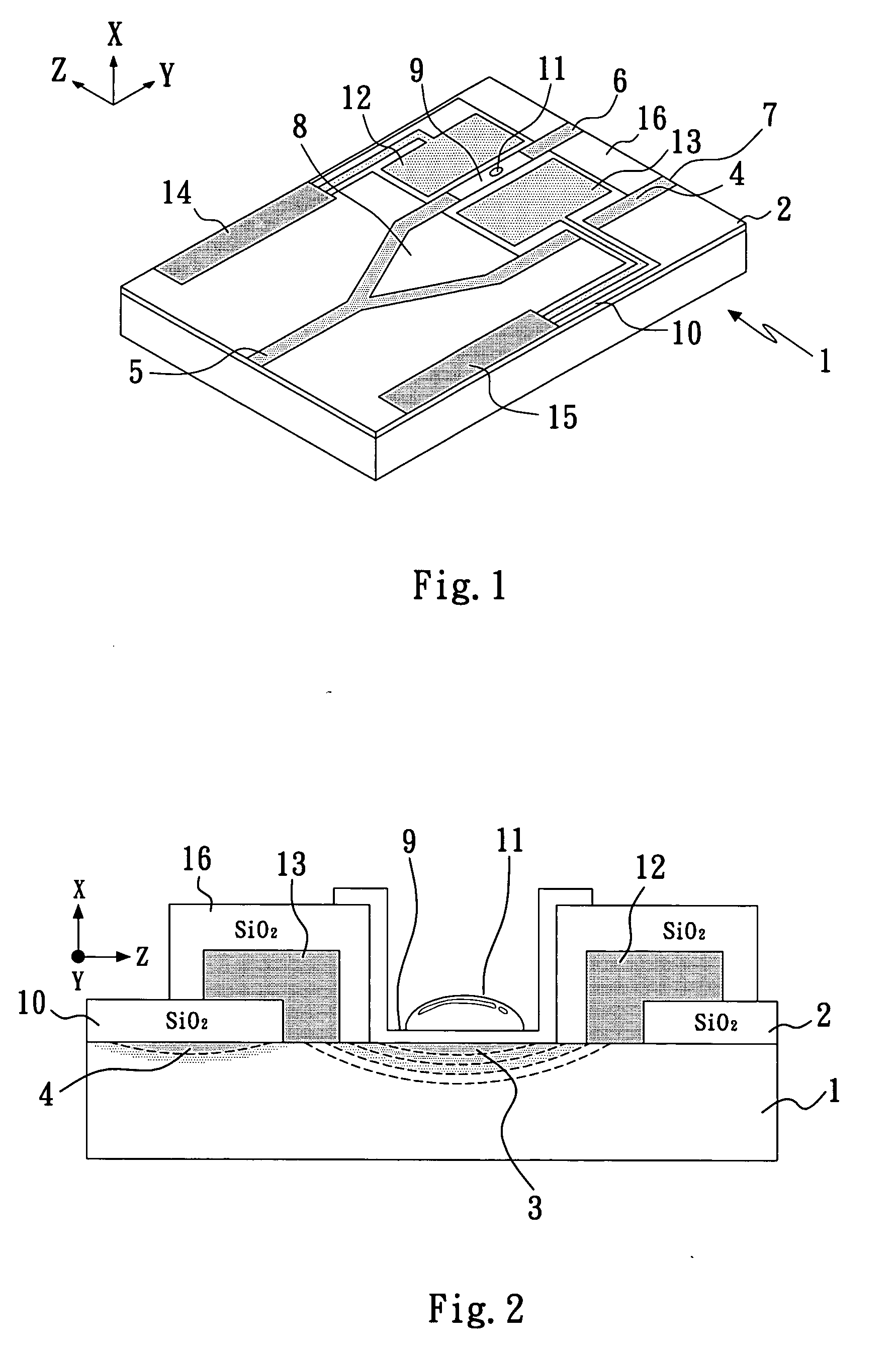Surface-plasmon-resonance sensing technique using electro-optic modulation
- Summary
- Abstract
- Description
- Claims
- Application Information
AI Technical Summary
Benefits of technology
Problems solved by technology
Method used
Image
Examples
Embodiment Construction
[0031] As shown in FIG. 1 and FIG. 2, a surface-plasmon-resonance sensing device based on the electro-optical effect of the present invention, provided on a substrate 1 with a surface 2, comprises a waveguide region consisting of a sensing waveguide 3 and a reference waveguide 4, and electrode section with two electrode ends 12 , 13 and two electrode input ends 14, 15. The substrate 1 is an X-cut lithium niobate crystal with the X-cut surface 2 which exhibits excellent electro-optical effect. Both the sensing waveguide 3 and the reference waveguide 4 are formed through localized in-diffusion of titanium ions across the substrate surface 2 into the lithium niobate crystal. Other ions, such as zinc and nickel, also can be used to produce the required waveguide in the lithium niobate crystal. Electromagnetic waves transmit essentially along a waveguide direction which is parallel to the Y-direction of the lithium niobate crystal. The sensing waveguide 3 and the reference waveguide 4 sh...
PUM
 Login to View More
Login to View More Abstract
Description
Claims
Application Information
 Login to View More
Login to View More - R&D
- Intellectual Property
- Life Sciences
- Materials
- Tech Scout
- Unparalleled Data Quality
- Higher Quality Content
- 60% Fewer Hallucinations
Browse by: Latest US Patents, China's latest patents, Technical Efficacy Thesaurus, Application Domain, Technology Topic, Popular Technical Reports.
© 2025 PatSnap. All rights reserved.Legal|Privacy policy|Modern Slavery Act Transparency Statement|Sitemap|About US| Contact US: help@patsnap.com



